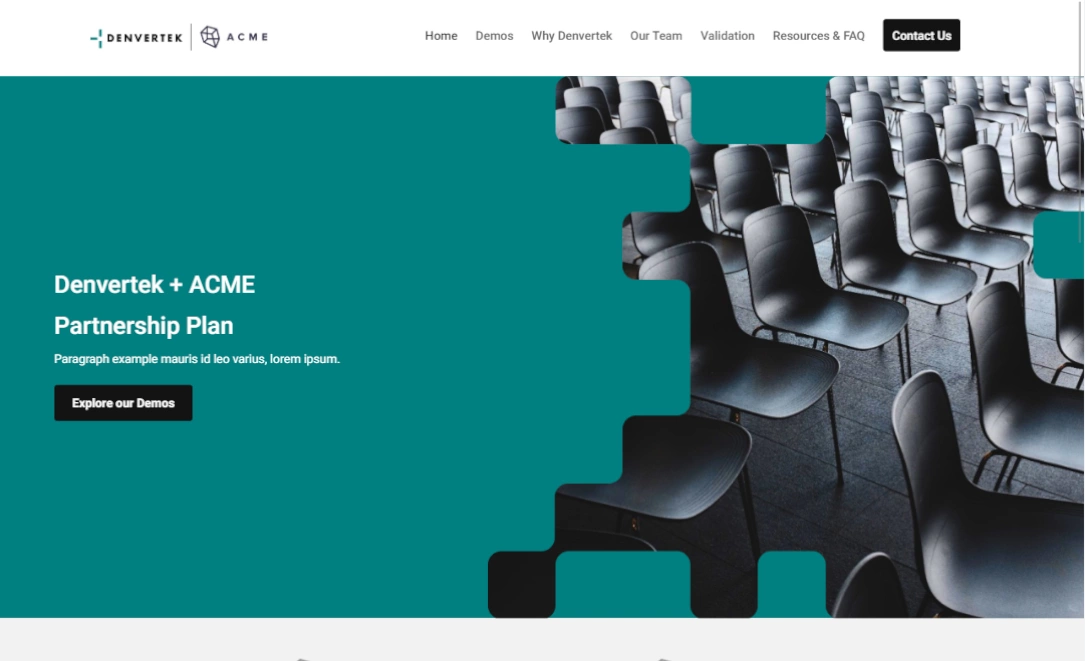If you’ve been working with sales enablement for a while (or are just familiar with the concept), then you might already know that creating a sales enablement content strategy that works is key. After all, custom content is only worthwhile if it performs the way you need it to. But with so many different directions to go and so much conflicting information out there, how do you know where to start?
Don’t worry—we’re going to walk you through a comprehensive list of what you need to get started. Then we’ll dive into the various types of B2B sales content and how each of them has the potential to help you achieve your goals.
Building a sales enablement content strategy: what you need to get started
Sales enablement is the process of training your sales reps, and can encompass everything from courses to coaching.
Sales enablement content is specialized content that sales reps use to address prospective customers’ concerns and – ultimately – convert interested parties into customers. But just because your custom content is largely internal, it doesn’t mean you need to pay any less attention to it. Here are the top three things you need to know to get started creating a winning sales enablement content strategy.
1. Identify who will be involved
While the sales enablement team will of course work together, not everyone needs to be involved in the creation and maintenance of enablement content. Determining ahead of time who is directly responsible for content will help save everyone time and frustration down the line. Because a sales enablement team often involves members of sales and marketing, it may make the most sense to have your marketing team handle the content.
Marketers may already be creating custom content to reach potential buyers, which means they’ll already have access to the tools and know-how needed to work on sales enablement content. Then, other members of the team such as coaches and trainers can provide a guiding hand as the on-the-ground experts.
2. Create your sales enablement content strategy
Start by looking for the gaps in your current strategy if you have one. Where are reps struggling? Are there knowledge holes that could be filled? Is the content they’re currently using old or outdated? This gives you a straightforward place to start. Once you’ve determined the gaps that exist, then it’s time to optimize!
Optimizing your B2B sales enablement content will likely involve tailoring content to each stage of the buyers’ journey. Reps should have the exact right content at their fingertips, whether they’re about to close a deal or just entering into a conversation.
3. Equip your team with tools and technology
Luckily, sales enablement teams can benefit from a wealth of technological solutions specifically designed to give a helping hand. Some of them will be easy-to-use microsite hosting solutions like Zoomforth, giving your custom content a place to live. Others, like CRM solutions, may integrate sales enablement tools into a larger platform.
Making the time to talk to the sales enablement team as well as reps about their pain points can go a long way in identifying the best tools for your team. This can help ensure you invest in tech they’ll actually use, resulting in cost savings in the long term.
Types of content for B2B sales enablement
As you dive into creating your sales enablement content strategy, it can be smart to consider what types of content you’d like to include. Here are some popular options:
Case studies
Pros: Case studies can encourage prospective clients to buy because they show them how your product can solve a problem. They’re also great for helping reps see the relationships between people and situations.
Cons: Due to their involved nature, case studies can be time-consuming processes that are difficult to generalize. There’s also a risk of bias tainting your results, rendering your study less useful or even useless.
How to incorporate it into your content strategy: Case studies are best employed early on in the sales cycle when customers are still collecting information.
White papers
Pros: White papers provide value through their breadth and depth, offering long-form, thoroughly-researched reports into a given area. They’re shareable and place heavy emphasis on the facts.
Cons: The length of white papers also often means people might not be as interested in reading them and they can be seen as dry and boring. They’re also significantly more research- and time-intensive.
How to incorporate it into your content strategy: If you have the resources to properly research a white paper, it can be a great source of reusable content, especially in the early stages of the sales cycle.
Microsites
Pros: Microsites are endlessly customizable and are a great place to host original content where you’ll have more creative and analytic freedom.
Cons: If you choose the wrong hosting solution, managing your microsites can get expensive and overly complicated.
How to incorporate it into your content strategy: Thankfully, microsites can be used at almost any point during the sales cycle and can host content internally or externally.
Social proof
Pros: Social proof can encourage potential customers to purchase or create a positive brand association. Collecting it doesn’t take a large budget, either, so even companies with less capital can use it.
Cons: Social proof can’t truly be manufactured so if there aren’t a lot of people speaking positively about what you do or creating content about it, then it isn’t something you can fake.
How to incorporate it into your content strategy: Social proof is best used as a supporting pillar in an overall sales enablement strategy.
Slide decks
Pros: Slide decks are super easy to make and can be made on a variety of different platforms. They quickly and succinctly take users through the broad strokes of a topic. It distills things down to the most crucial bullet points.
Cons: Their very nature means a good deck can’t contain all the information you might need to share and they can get difficult to navigate and unwieldy if you try to cram too much into them.
How to incorporate it into your content strategy: Slide decks can be a convenient way to keep internal training info in one place, or a great way to quickly share info with prospective clients during the connection phase of the sales cycle.
Blog posts
Pros: Blog posts can garner SEO traction and have the potential to help with lead generation thanks to their engaging and shareable nature. They can also help people discover your company or product.
Cons: Though less intensive than a white paper, a blog post is still a labor to produce, especially if you don’t have a dedicated copywriter on staff. It can also be hard to differentiate yourself from the competition.
How to incorporate it into your content strategy: Most useful in the discovery and lead generation phases of the sales cycle, blog posts can help boost overall traffic to your page.
Create winning B2B microsites and boost your sales enablement strategy with Zoomforth
Ready to get your sales enablement content strategy off the ground? Then you’ll need Zoomforth to give that content a place to live!
Zoomforth’s easy drag-and-drop tools make designing all the custom microsites you need a breeze. Even better? All your sites will have access to real-time analytics. Don’t wait—request a demo today.



